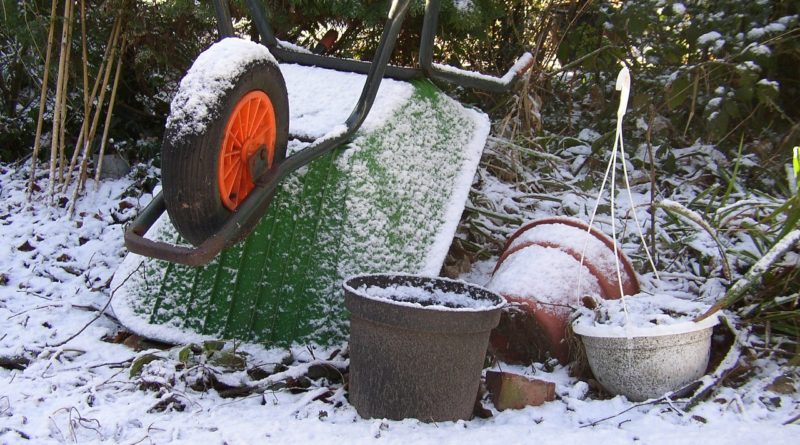Help Your Garden Survive this Winter
Slowly but inevitably, the year is coming to an end and the fruitful and colorful autumn is giving its way to cold and barren winter. One would assume that, as the last leaves fall from the trees, all garden activity stops as well, waiting for the next spring to come and breathe in a new life. Well, one would be horribly wrong because the things are only barren on the surface and everything going on underneath during the “winter sleep” can make spring either a joyful reunion or a nasty hangover. So, let’s see what we can do to prepare our plants for long winter and make their return easier.
Protecting the Perennials
Perennials are plants that are supposed to live for more than two years – it’s safe to say nature equipped them to deal with a little bit of frost. Still, it should be a good idea to, after the plants die out, do these few easy steps:
- Cut the stems to within 5 centimeters off the ground and remove the cuttings. It’s the best way to remove disease spores and pest eggs that may linger there.
- Compost dead plants to create an organic soil conditioner. However, be sure to throw questionable plant material in the trash.
- Mulch perennial and shrub beds to protect the plant roots and mitigate the effects of extreme temperature changes.
Recommended mulching materials are hay, eggs, pine needles, cornstalks and peat moss.
Protecting the Bulbs
Despite the common belief, most of the bulbs, like tulip bulbs, are very hardy flowers that don’t need to be dug up every winter. So, you only have to mulch their beds with evergreen boughs to protect the soil from shifting or cracking. However, if you are living in an area that has extreme cold you should probably store the bulbs in some cool dry place until the next spring. Just do be sure to do it properly.
Protecting the Roses
Although their thorns provide them sufficient protection against predators, roses are very vulnerable to winter’s frost. To safeguard them during their dormant period, you should:
- Stop fertilizing two months before you expect the first frost. This is also the good time to stop cutting blossoms. (This way you will stop stimulating new tender growth that will be killed due to frost).
- Remove old mulch that might harbor disease spores or insect eggs and spread the fresh mulch. This time you should look for shredded bark, chopped leaves and wood chips. If you have trouble with rodents spread the mulch only after ground freezes.
Protecting the Trees
Old trees are generally well-equipped for with winter on their own. Shorter days prompt trees and shrubs to drop leaves and prepare for winter dormancy. That is why you should stop fertilization during the autumn so you don’t delay the preparation. Also:
- Continue to water trees and shrubs till the end of autumn to send them into dormancy with ample moisture.
- Wrap trunks of your trees with crepe-paper wrap. Stop when you reach the first branches.
- Protect the young trees from critters with wire or some of the commercial tree-guard products.
- Screen broad-level evergreens from winter wind and sun with shade cloth shelters.
Protecting the Vegetables
Finally, there are good old vegetables. By this time of the year vegetable garden is so messy that it may seem overwhelming at first, but try doing things step by step:
- Clean up the garden beds. It is a big chunk of work but if you hire a gardening service or work the garden one bed at the time it is manageable.
- Remove all dead plant material and rotten fruit or vegetables. Healthy vegetation can be added to your compost pile but be aware that most of them do not get hot enough to destroy fungus and diseases.
- Cover the beds with mulch, but don’t go overboard (no more than 5 cm). Many pests and diseases are killed when the soil freezes. Mulching the beds too thickly can prevent the soil from freezing.
- Expand the garden. Now, this is not so much the mean for protection but more a preparation for the next season. If you ever wanted to make your garden bigger, the autumn is the right time.
Now that you’ve taken care of all the things we mentioned it is time to give yourself a break and enjoy the rest of the autumn. Soon, everything will be covered with snow and frost. Don’t worry though – your plants will be alive and well.

